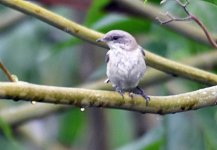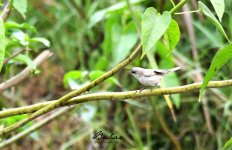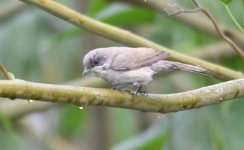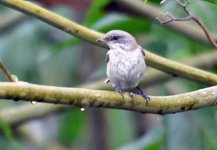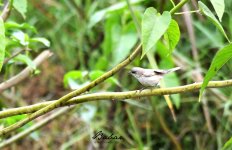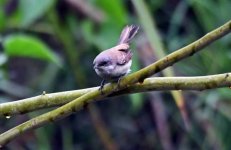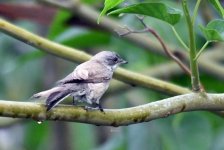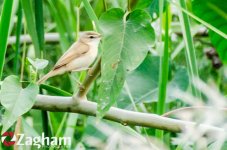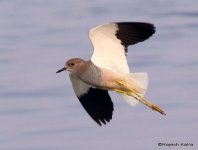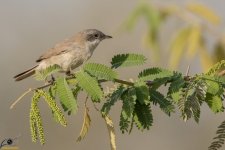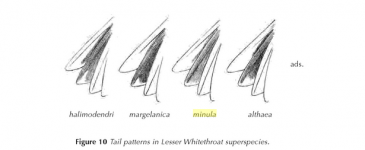Both birds ARE probably "Desert Whitethroat", as in desert forms of Lesser Whitethroat. The whole situation has become horribly complicated. It used to be that the form of Lesser Whitethroat favouring arid habitat (usually small and short-winged with sandy-brown upperparts, pale grey head with a weak or almost non-existent mask and making tit-like churring calls) was automatically labelled
minula, AKA Desert or Small Whitethroat. It was generally regarded as a separate species until recently. These birds are quite common in the UAE in winter, especially in mountain wadis. They often feed on or close to the ground and often cock their tails. At the same time there are birds which look slightly larger and longer-winged, frequent trees more and feed higher up, and appear almost intermediate in appearance.
However, in 2013, a study by Olsson
et al found that the form
minula had a more restricted breeding range than was previously thought, and given the distance involved, people started to think it was unlikely that this form could reach the Gulf. This study also found that on current evidence, no form of Lesser Whitethroat met the criteria for species status. A study by Votier last year found that birds tested in Oman and the UAE were actually the form
halimodendri, usually regarded as a subspecies of
curruca, or in one case
blythi. Not long afterwards, the taxon Desert Whitethroat was removed from the Oman list, followed by the UAE list, and we now class these birds as
halimodendri. HBW now lumps all forms of Lesser Whitethroat together, although it's possible that the complex could be separated into as many as six or more species in the future.
So what reaches Pakistan? If good numbers of
halimodendri reach the Gulf, it's a good bet they reach Pakistan too. HBW does claim that
minula reaches Pakistan too, a bit unlikely when you look at the geography, but I suppose it's possible. The question (probably academic) is how you would separate the two forms. I copy-pasted part of the relevant page from "Sylvia Warblers". However, look at how variable these birds can be on this page, e.g. the difference between the Sayq bird (classic DLW type) and the Dawkah and Hayma birds. If these birds are all
halimodendri, what does
minula look like?
http://www.birdsoman.com/Birds/136-Warblers/DesertWhitethroat/DesertWhitethroat.htm
It would be good if someone could do some DNA-testing on LWs in the subcontinent to see what is turning up. Here in the Gulf we hardly know what we are looking at any more - here are two pages of unidentified birds.
https://www.smugmug.com/gallery/n-WBXPQ/i-sDRH7Xv



